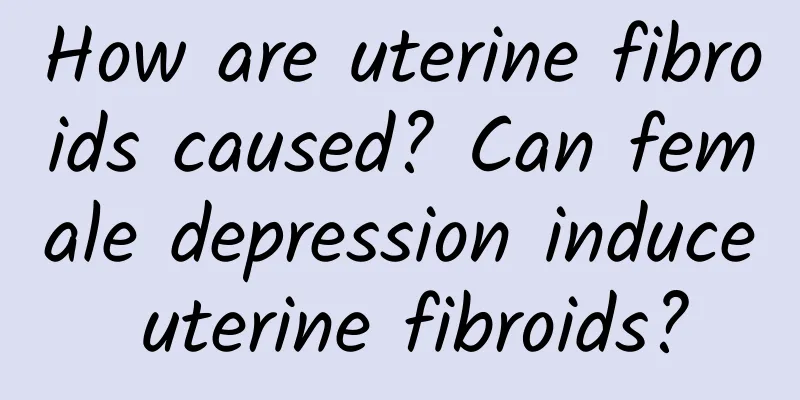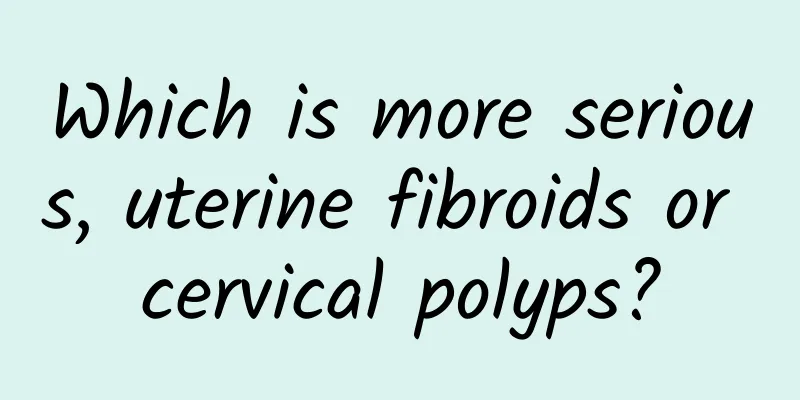How are uterine fibroids caused? Can female depression induce uterine fibroids?

|
Uterine fibroids (Hysteromyoma) Uterine leiomyoma, also known as uterine leiomyoma, is the most common benign tumor of the female genitals. Most of them are asymptomatic, and a few show vaginal bleeding, abdominal contact with the tumor and compression symptoms. Multiple uterine fibroids are common in cases of pedicle torsion or other conditions that cause pain. Uterine fibroids are the most common tumor of the female genitals. At present, the cause is still unclear. If not treated in time, it will lead to female infertility, miscarriage, frequent urination, urination disorders and other hazards, and is the main killer of women's health. So how are uterine fibroids caused? Here is your introduction. 1. Oral contraceptives Some women who started taking birth control pills earlier have a higher incidence of uterine fibroids. 2. Long-term stimulation by estrogen (a) Occasionally seen in women after menarche, more common in middle-aged women. After menopause, some fibroids stop growing and gradually shrink, but they cannot disappear on their own; (ii) endometrial hyperplasia with multiple myomas; (3) Patients with ovarian granulosa cell tumors and theca cell tumors (which can secrete estrogen) often have uterine fibroids; (4) During pregnancy, estrogen levels increase and fibroids grow rapidly; Exogenous estrogen can accelerate the growth of fibroids. Unreasonable diet structure Surveys show that women who mainly eat meat are more likely to suffer from uterine fibroids. Because vitamins can reduce the sensitivity of the uterine myometrium to estrogen and regulate the female neuroendocrine system, especially vitamin C, women should pay more attention to their vitamin C intake. 4. Diet Women who eat meat are more likely to suffer from uterine fibroids than vegetarian women; vitamins can reduce the sensitivity of the uterine myometrium to estrogen and regulate the neuroendocrine system, especially vitamin C. 5. Symptoms 1. Qi stagnation and blood stasis syndrome: mild normal menstruation, severe metrorrhagia or bleeding, swollen and painful breasts, swollen or dull pain in the lower abdomen, a feeling of prolapsed anus, dark red tongue with purple spots on the edges, and deep, stringy or fine pulse. 2. Yin deficiency and hyperactivity of fire syndrome: in the early stage of menstruation, there is metrorrhagia or continuous bleeding, burning sensation in the chest, or heat in the lower abdomen, itching or tingling of the nipples, or breast pain involving the armpits, red or white vaginal discharge after menstruation, or alternating yellow and white discharge, red tongue, thin or thin yellow tongue coating, and stringy or fine pulse. 6. Depressed women are more likely to suffer from uterine fibroids Because middle-aged women face the dual pressures of life and work, they are prone to depression, which promotes increased estrogen secretion, which is also one of the important causes of uterine fibroids in women. 7. Genetics 3. Obesity: On the one hand, fat is metabolized into estrogen, and uterine fibroids rely on estrogen for growth; on the other hand, for every 10 kg of overweight a woman has, the risk of developing uterine fibroids increases by 21%. |
>>: How are uterine fibroids induced? What are the methods to prevent uterine fibroids?
Recommend
What are the common symptoms of adnexitis?
Adnexitis is a gynecological disease that is more...
What should I do if my menstruation is always delayed for a long time?
What should I do if my menstruation is always del...
Lichen sclerosus is one of the types of vulvar leukoplakia
The main symptoms of vulvar leukoplakia are tingl...
Can premature ovarian failure in women be cured?
Women will have some gynecological inflammation t...
What are the specific symptoms of uterine fibroids? What are the hazards of uterine fibroids?
Uterine fibroids are one of the most common benig...
Papaya = cancer prevention + detoxification, breast enhancement, "slimming"
Papaya, also known as the "king of beneficia...
What should I do if I have uterine fibroids?
Uterine fibroids are a very common uterine diseas...
What are the symptoms of severe cervical erosion? Two major symptoms of severe cervical erosion
Cervical erosion is a manifestation of chronic ce...
Is endometrial tuberculosis contagious?
Is endometrial tuberculosis contagious? Endometri...
What should I eat after uterine fibroid surgery? How long after uterine fibroid surgery can I have sex?
What should I eat after uterine fibroid surgery? ...
Tests that should be done for patients with Bartholinitis
Bartholinitis is a common external genital diseas...
Abnormal vaginal discharge after a cold or fever
Abnormal vaginal discharge after a cold or fever ...
How to cure cervicitis? Women can try several dietary treatments for cervicitis
When talking about common gynecological diseases,...
What happens if chocolate cysts are not treated?
Chocolate cysts, also known as ovarian endometrio...
Can frequent back pain be caused by pelvic inflammatory disease?
Don't think that only men's back pain sho...









